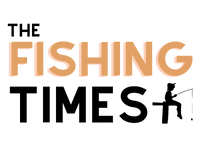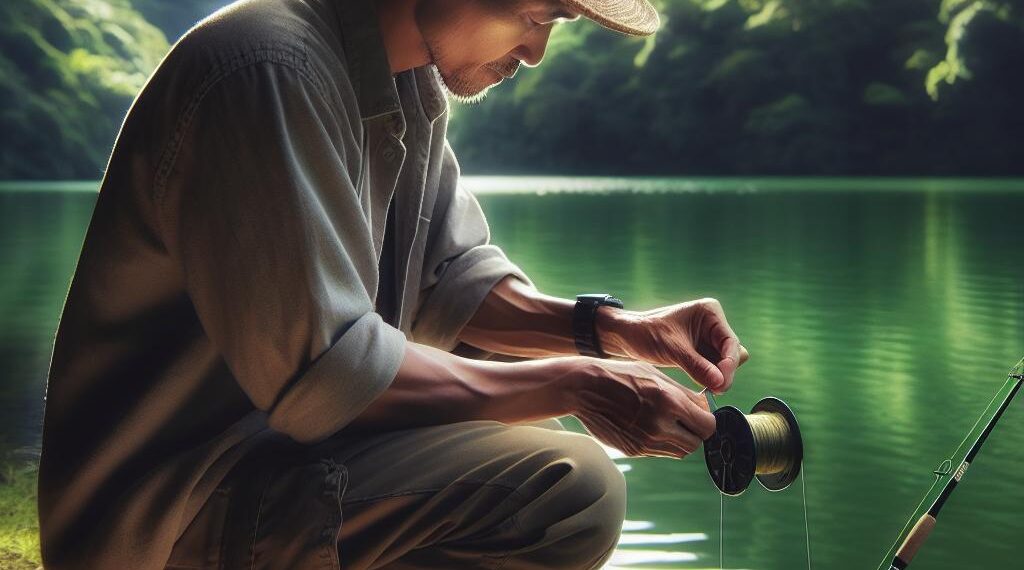Picture this: you’re on a boat, rod in hand, but something’s missing; it’s the right fishing line! It’s a common snag amongst anglers—novices and pros alike. Did you know that choosing the wrong line could mean the difference between reeling in that trophy fish or going home empty-handed? That’s where “Top Fishing Line Types Explained” comes in. Whether you’re just starting out or fine-tuning your skills, understanding fishing lines will transform your experience. Here, we’ll dive into the essentials, making sure you leave with more confidence and the know-how to enhance your catch. Let’s demystify the world of fishing lines together!
What’s Inside ‘Top Fishing Line Types Explained’?
Fishing line types refer to the different materials and constructions used to make fishing lines, essential for specific angling methods and target species. Popular types include monofilament, fluorocarbon, and braided lines. Monofilament offers stretch and versatility, fluorocarbon provides invisibility underwater, and braided lines are known for strength. Originally, fishing lines were made from natural materials like silk, but technological advancements introduced synthetic options. Knowing these types is vital as it ensures the right choice for fishing conditions, boosts success rates, and improves the overall fishing experience. By understanding line types, anglers can match their gear to specific techniques, enhancing both skill and enjoyment.Understanding Different Fishing Line Types Elevates Your Skills
Understanding the different types of fishing lines is crucial for any angler keen on improving their skills and getting the most out of their fishing expeditions. Here are some benefits of grasping the nuances of “Top Fishing Line Types Explained”:- Enhanced Performance: Knowing the correct fishing line can significantly boost your catch rate. Each line type—like monofilament, fluorocarbon, or braided line—has unique properties suited to specific conditions, helping you make informed choices based on where and what you’re fishing for.
- Skill Advancement: By mastering how different lines work, you’ll acquire the skills to tackle various fishing situations. This knowledge adds a layer to your angling expertise, equipping you to adapt quickly and overcome challenges in the water.
- Increased Safety: Choosing the right line reduces the risk of snapping, which can be a safety hazard both for you and the fish. Reduced breakage means less underwater debris, contributing to cleaner fishing environments and safeguarding aquatic habitats.
- Conservation Efforts: Using the appropriate fishing line minimizes harm to fishes, helping to maintain their health until release. This is especially important for promoting catch and release practices that support sustainable fish populations.
- Cost Efficiency: Knowledge aids in purchasing the right line, preventing unnecessary spending on unsuitable lines that might not last or perform well in particular settings. Resourceful choices keep both your wallet and the environment in mind.
Understanding Different Fishing Lines: A Guide to Easy Angling
Fishing lines can make or break your angling experience. Understanding how to choose and use them effectively is key. Here’s a simple guide to help you get the most out of your fishing lines: 1. Choose the Right Line: Match your fishing line type to the species you’re targeting. For big fish, opt for a braided line because it’s strong and has minimal stretch. For less aggressive fish, a monofilament line works well due to its flexibility.2. Practice Knot-Tying: Tying secure knots is crucial. Learn basic knots like the Palomar and improved clinch knot; they can drastically improve your setup. Don’t rush this step, as improperly tied knots are a common mistake that could cost you a catch.
3. Check for Wear and Tear: Regularly inspect your line for nicks or abrasions, especially after every trip. Damaged lines can snap under pressure, so replace them if needed. This simple habit keeps your line dependable and ready for action.
4. Master Casting Techniques: Practise casting in your backyard. Start with short distances and increase as you gain confidence. Ensure your rod is suitable for the line being used to avoid break-offs during casting. Happy fishing!
Choosing the Right Fishing Line for Every Adventure
| Fishing Line Type | Recommended Gear | Advantages | Skill Level |
|---|---|---|---|
| Monofilament | Daiwa D-Force Spinning Combo | Great for beginners. Easy handling and knots well. | Beginner |
| Braided | Penn Battle III Combo | High strength and sensitivity. Ideal for deep-sea fishing. | Intermediate |
| Fluorocarbon | Shimano Stradic CI4+ FB | Virtually invisible underwater. Perfect for clear water. | Advanced |
| Copolymer | Abu Garcia Revo SX Combo | Durable and low stretch. Good for various conditions. | Intermediate |
The standout item for anglers looking to deepen their understanding of fishing lines is the PENN Battle III Combo paired with a braided line. This setup offers unparalleled strength and versatility, catering well to those progressing to the intermediate level. It’s ideal for those angling in deep-sea environments where high sensitivity and durability are crucial. Whether you’re after trophy fish or improving your craft, this combo helps enhance your fishing experience significantly, blending performance with affordability. It’s a top pick for expanding your skills and catching bigger fish!
Understanding the Different Types of Fishing Lines
Let me tell you about my mate, Tom. A few months ago, he was struggling with his fishing trips—he’d come back empty-handed more often than not. We had a chat about his setup, and it turned out his fishing line was part of the problem. He’d been using the same monofilament line since his school days! That’s when “Top Fishing Line Types Explained” came to the rescue. He discovered the importance of matching the line type to the fishing situation. For instance, he learned about the low stretch and higher sensitivity of fluorocarbon lines, ideal for clear water conditions. He switched to braided lines when nestled amidst weed beds due to their fantastic strength and thin diameter. Armed with this knowledge, Tom went on his next fishing trip. The result? He reeled in a hefty pike, the largest he’d ever snagged! Tom’s story taught us the valuable lesson of never underestimating the role of the right gear. It transformed his outdoor experience, and he’s now more confident and excited for the adventures ahead. Sometimes, it’s all about a small tweak for massive improvement!Fishing Line Facts: Protecting Our Waters & Wildlife
- Use biodegradable fishing lines: Opt for lines made from eco-friendly materials that break down naturally over time, reducing potential harm to fish and aquatic habitats.
- Recycle old lines: Many local tackle shops or fishing organisations offer recycling options for fishing lines. It’s a simple step towards reducing waste.
- Avoid overfishing: Adhere to local regulations regarding fish size and catch limits, ensuring you’re not taking more than nature can sustain.
- Practice catch and release: When possible, release fish back into the water gently to maintain population levels, using barbless hooks to minimise harm.
- Choose lead-free tackle: Lead sinkers and jigs can be toxic to fish and wildlife, so consider alternatives like steel or tungsten.
- Stay informed: Keep up-to-date with local conservation efforts and changes in fishing guidelines, adjusting your practices accordingly.
- Educate fellow anglers: Share sustainable fishing practices with friends and family, spreading awareness and encouraging environmental responsibility.












